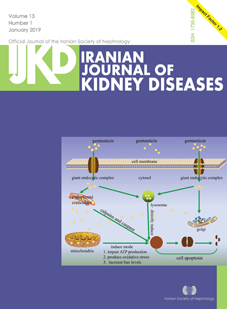Chronic Neurological Complications in Hemolytic Uremic Syndrome in Children
Abstract
Introduction. Central nervous system (CNS) involvement is the most common extrarenal involvement in hemolytic uremic syndrome (HUS). There are limited reports on clinical cause of chronic neurologic problems in HUS. We evaluated residual neurologic involvement in children with HUS.
Materials and Methods. This cross-sectional study was conducted on 58 patients with a diagnosis of HUS referred to 2 tertiary pediatric centers. Neurological examinations was performed on all of the patients and they were followed up between 2001 and 2015. Data including demographic variables, type of HUS, neurological symptoms, and other complications were recorded. Neurological involvements that occurred after 6 months from the acute phase of HUS were considered as chronic neurological involvement.
Results. Among 58 patients who were included in the study, 31 (53.4%) had neurological manifestations (31 with acute and 19 with chronic complications). There was no significant difference in acute neurological manifestations between typical and atypical HUS, while chronic neurological manifestations were more frequents in patients with atypical HUS (P = .05). The most common presentations were seizure and decreased level of consciousness. Chronic neurologic problems were found in follow-up visits of 11 patients with acute and 8 without acute involvement. Hypertension was associated with chronic manifestations (P = .01).
Conclusions. According to our results, residual neurological problems were not infrequent in HUS and they were more related with atypical form of disease. Evidence of hypertension is a significant variable for persistence of neurologic problems.


